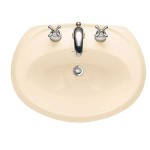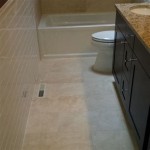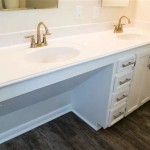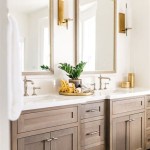Is Backsplash Necessary In Bathroom? Examining Functionality, Aesthetics, and Alternatives
The question of whether a backsplash is necessary in a bathroom is a common one for homeowners undertaking renovations or new construction. While backsplashes are ubiquitous in kitchen design, their necessity in the bathroom is subject to debate. Factors such as the bathroom's layout, the materials used for the vanity and surrounding walls, and the occupants' lifestyle all play a role in determining whether a backsplash is a worthwhile addition or an unnecessary expense. This article will explore the multifaceted considerations involved in deciding whether a bathroom backsplash is essential, examining its protective functions, aesthetic contributions, and potential alternatives.
A backsplash, by definition, is a vertical extension of the countertop, designed to protect the wall behind it from splashes and spills. In the context of a bathroom, this primarily refers to water splashes from the sink, but also encompasses toothpaste, soap, and other everyday bathroom products. The material used for a backsplash is typically water-resistant and easy to clean, preventing damage to the wall surface that could lead to mold growth or deterioration of the paint or wallpaper. The absence of a backsplash can result in water damage accumulating over time, necessitating more frequent repainting or even wall repairs. Therefore, the perceived "necessity" is often linked to the susceptibility of the wall material to moisture and the amount of splashing expected in the space.
Protection Against Water Damage and Stains
The primary function of a bathroom backsplash is to safeguard the wall behind the sink from water damage. Walls, especially those painted with standard latex paint, are inherently porous and susceptible to absorbing moisture. Repeated exposure to water can cause the paint to blister, peel, and eventually lead to mold growth, which poses a health hazard. A backsplash, constructed from water-resistant materials such as tile, glass, or solid surface, acts as a barrier, preventing water from penetrating the wall. The smooth, non-porous surface of these materials makes them easy to wipe clean, minimizing the risk of stains from toothpaste, soap scum, and other bathroom products. The height of the backsplash also plays a crucial role in its effectiveness; a taller backsplash offers more comprehensive protection against higher splashes.
The type of sink also influences the need for a backsplash. Vessel sinks, which sit on top of the counter, often result in more splashing than undermount sinks, as water tends to bounce off the higher basin. Similarly, sinks used frequently by children or those prone to messy habits may benefit more from a backsplash. Furthermore, the material of the countertop itself should be considered. If the countertop is a porous material like certain types of natural stone that are not properly sealed, a backsplash can prevent water from seeping between the counter and the wall, potentially causing damage to both surfaces. Effectively, a backsplash minimizes the long-term maintenance required by protecting both the wall and the countertop from consistent water exposure.
The environmental conditions within the bathroom are also relevant. Bathrooms with poor ventilation are more prone to humidity, which can exacerbate water damage issues. In such cases, a backsplash not only prevents direct water splashes from damaging the wall but also helps to minimize the overall impact of moisture in the room. Conversely, in well-ventilated bathrooms, the risk of water accumulating on the walls is lower, potentially reducing the perceived need for an extensive backsplash. However, even in well-ventilated spaces, the localized area directly behind the sink remains vulnerable to splashes, suggesting that at least a minimal backsplash may still be beneficial.
Aesthetic Considerations and Design Integration
Beyond its protective function, a backsplash plays a significant role in the overall aesthetic of the bathroom. It provides an opportunity to introduce color, texture, and pattern, thereby enhancing the visual appeal of the space. A well-chosen backsplash can complement the vanity, countertop, and other bathroom fixtures, creating a cohesive and stylish design. The material, color, and pattern of the backsplash can be strategically used to create a focal point, add visual interest, or tie together different elements within the room. From classic subway tile to intricate mosaics, the design options for bathroom backsplashes are virtually limitless.
The height and extent of the backsplash can also influence the room's aesthetic. A short backsplash, typically 4-6 inches high, provides minimal protection but can offer a subtle decorative touch. A full-height backsplash, extending from the countertop to the ceiling, creates a more dramatic impact and provides maximum protection. Alternatively, a custom-designed backsplash that incorporates unique shapes or patterns can add a personal touch and elevate the overall design. The choice of grout color is also a crucial factor, as it can either blend seamlessly with the tile or provide a contrasting accent. The design of the backsplash should complement the overall style of the bathroom, whether it is modern, traditional, minimalist, or eclectic.
The absence of a backsplash can also be a design choice. In minimalist bathrooms, a clean, uninterrupted wall surface can contribute to a sense of spaciousness and simplicity. However, foregoing a backsplash requires careful consideration of the wall material and the occupants' lifestyle. If the wall is painted, it may be necessary to use a highly durable and washable paint specifically designed for bathrooms. Regular cleaning and maintenance will be essential to prevent water damage and stains. In some cases, a subtle sealant can be applied to the wall surface to provide additional protection without compromising the aesthetic of a bare wall.
Alternatives to Traditional Backsplashes and Cost Considerations
While traditional tile or stone backsplashes are common choices, there are several alternative options that offer similar protective benefits and aesthetic appeal. Solid surface materials, such as acrylic or quartz, can be molded to create a seamless backsplash that integrates directly with the countertop. This option eliminates grout lines, simplifying cleaning and maintenance while providing a sleek, modern look. Another alternative is glass, which can be used to create a transparent or colored backsplash that is easy to clean and resistant to water damage. Glass backsplashes can be customized with different textures and patterns to create a unique design.
Another consideration is the use of a high-quality, moisture-resistant paint. This paint is specifically formulated to withstand the humid conditions of a bathroom and is more resistant to blistering and peeling than standard latex paint. While it may not provide the same level of protection as a solid surface backsplash, it can be a cost-effective alternative, particularly for homeowners who prefer a minimalist aesthetic. Regular cleaning and maintenance are essential to ensure that the paint remains in good condition and provides adequate protection against water damage. The key is to select a paint with a durable, washable finish that can withstand frequent cleaning without losing its color or sheen.
The cost of installing a backsplash varies depending on the material, size, and complexity of the design. Tile backsplashes can range from relatively inexpensive ceramic tile to more costly natural stone or glass options. The cost of labor for installation also needs to be factored in, as intricate designs or larger backsplashes may require more time and expertise. Solid surface backsplashes tend to be more expensive than tile, but they offer the benefit of seamless integration with the countertop. Homeowners should carefully consider their budget and weigh the cost of different backsplash options against their protective and aesthetic benefits. In some cases, a simple, cost-effective backsplash may be sufficient to provide adequate protection, while in other cases, a more elaborate and expensive option may be justified based on the overall design of the bathroom.
Backsplash Advice For Your Bathroom Would You Tile The Side Walls Too Designed

Do You Need A Backsplash For Your Bathroom Vanity Diamond Kitchen Bath

Do Bathroom Vanities Need A Backsplash

Backsplash Advice For Your Bathroom Would You Tile The Side Walls Too Designed

A Better Alternative To 4 Inch Tall Backsplash

Does A Bathroom Vanity Need Backsplash Bathtubber

Does A Vanity Need Backsplash In The Bathroom Thediyplan

Does A Bathroom Vanity Need Backsplash Bathtubber

Unique Bathroom Vanity Backsplash Ideas Glass Stone Ceramic Tile

47 Modern Bathroom Backsplash Sleek Plain Tile Designs
Related Posts







